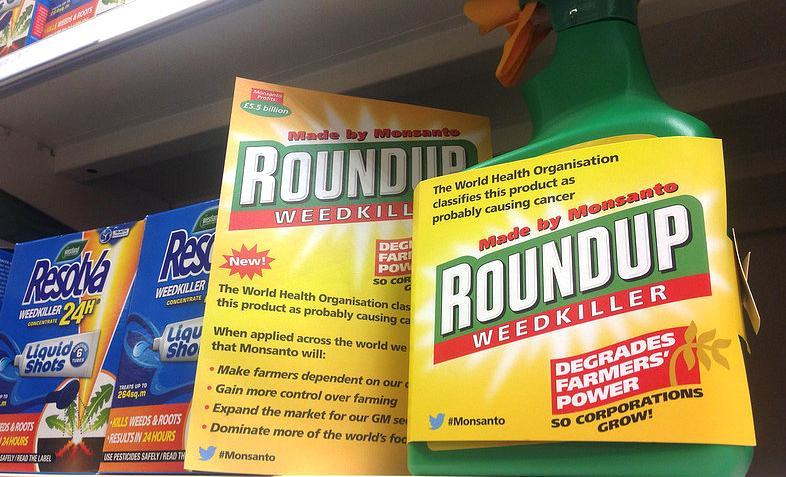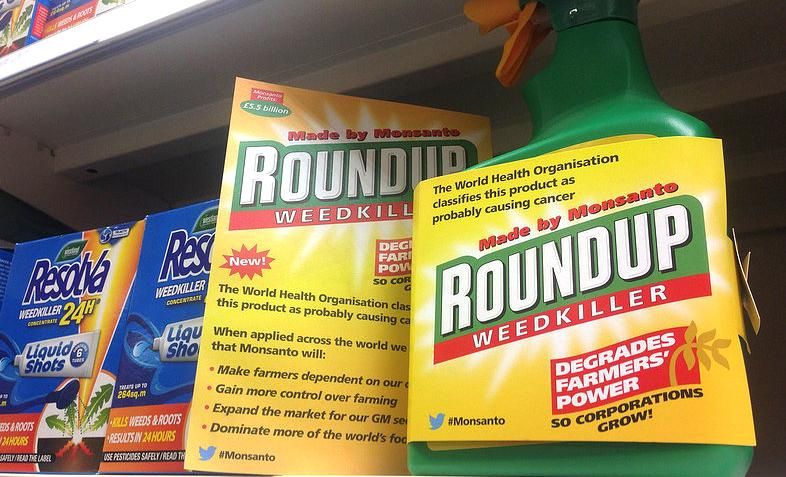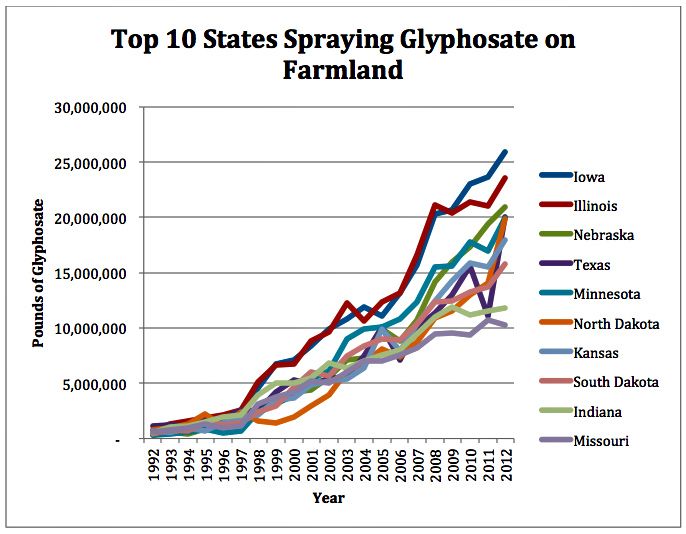
21 Plaintiffs Unite Cancer Cases Against Monsanto as EPA Forms Panel to Review Glyphosate

Cancer lawsuits against Monsanto over the company’s glyphosate-based weedkiller, Roundup, are gaining steam.

On Wednesday, a motion was filed with the U.S. Judicial Panel on Multidistrict Litigation to create a coordinated docket for 21 pending federal cases that involve the exact same product, the same active ingredient and the same injury, the legal news site Harris Martin Publishing writes.
The plaintiffs—represented by personal injury lawyers Aimee H. Wagstaff and David J. Wool of the Colorado law firm Andrus Wagstaff, P.C.—allege that exposure to glyphosate caused them to develop non-Hodgkin’s lymphoma.
As Harris Martin reported (via
Sustainable Pulse), the plaintiffs want to unite the cases in one court either before judge Nancy J. Rosenstengel or judge David R. Herndon of the U.S. District Court for the Southern District of Illinois.
The Illinois court was chosen for a number of reasons. First, three of the 21 Roundup cancer cases are pending in the state. Second, the midwestern state is the largest producer of soybeans, which were doused with 122,473,987 pounds of glyphosate-based herbicides in 2014 alone, “more than any other crop,” the plaintiffs said. Third, the Southern District of Illinois is located within 20 miles of St. Louis-headquartered Monsanto.
“Accordingly, Illinois’ factual nexus and interest in the outcome of this litigation is extremely strong,” the motion stated.
States that spray the most glyphosate. USGS Environmental Working Group
“Each Roundup Case requires extensive discovery concerning the safety, development and marketing of Roundup, which has been on the market since the mid 1970s,” the motion said.
“Each Plaintiff will need to conduct the same complicated regulatory and scientific discovery (spanning over 40 years) to demonstrate that exposure to Roundup caused their non-Hodgkin’s lymphoma. To date, a few of the Roundup Cases have commenced discovery, but that discovery is being conducted under different, and sometimes conflicting, judicial constraints and orders. Centralizing these cases before one [Multidistrict Litigation] Judge to ensure that the discovery is done once for all claimants makes sense.”
Glyphosate is the
most widely applied pesticide worldwide. About 2.6 billion pounds of it was sprayed on U.S. agricultural land between 1992 and 2012, according to the U.S. Geological Survey.
The World Health Organization’s International Agency for Research on Cancer (IARC)
classified glyphosate as “probably carcinogenic to humans” last year.
IARC Scientist Reaffirms #Glyphosate's Link to #Cancer as #Monsanto's Requests to Dismiss Lawsuits Denied https://t.co/UsSBjCnsjm @Neilyoung
— EcoWatch (@EcoWatch) July 6, 2016
Just last week, an Illinois woman filed a lawsuit against Monsanto in the U.S. District Court for the Southern District of Illinois alleging Roundup caused her to develop non-Hodgkin lymphoma, according to the
Madison County Record.
Plaintiff Lynda K. Patterson alleges that she used Roundup on her garden and landscaping for more than a decade before being diagnosed with stage four non-Hodgkin lymphoma in August 2014, the Madison County Record reported. She underwent aggressive treatment, including chemotherapy.
She claims Monsanto allegedly designed formulated, manufactured and distributed the herbicide and failed to adequately warn consumers of the product’s health risks.
The plaintiff is represented by David M. Hundley of Hundley Law Group PC in Chicago and Christopher L. Coffin and Nicholas R. Rockforte of Pendley, Baudin & Coffin LLP in New Orleans. She is seeking a trial by jury and compensatory and punitive damages and attorneys’ fees.
EcoWatch has extensively covered the increasing number of cancer lawsuits mounting against Monsanto, with cases springing up all over the country.
Robin Greenwald, the head of environmental protection at personal injury law firm Weitz & Luxenberg, told EcoWatch that people across the U.S. have been contacting her about Roundup lawsuits, raising similar allegations that Monsanto has not adequately warned about Roundup’s link to cancer.
She said these people come in three categories: farmers and nursery workers who have been exposed to the compound through agricultural work; people who regularly apply Roundup to their own lawns and property; and landscapers who go from town to town and get exposed to the product.
Greenwald has helped at least 10 plaintiffs file lawsuits against Monsanto. She said all of these cases are focused on exposure to Roundup and diagnosis of non-Hodgkin’s Lymphoma.
BREAKING: California Widow Sues #Monsanto Alleging #Roundup Caused Her Husband's #Cancer https://t.co/Guj50ZJDRq pic.twitter.com/6CjDLMDXk6
— EcoWatch (@EcoWatch) March 9, 2016
The agritech giant has vehemently denied the cancer claims of its blockbuster product and has
demanded a retraction of the IARC report.
Meanwhile, the U.S. Environmental Protection Agency (EPA) issued a Federal Register
notice Tuesday, saying it is seeking eight ad hoc scientists to serve on the Federal Insecticide, Fungicide and Rodenticide Act Scientific Advisory Panel that will review glyphosate’s link to cancer at a four-day meeting this October.
“Individuals nominated for this meeting should have expertise in one or more of the following areas: Carcinogenicity (mammalian), cancer biostatistics, rodent cancer bioassays, epidemiology (cancer/occupational), genotoxicity/genetic toxicology/mutagenicity (related to human cancer risk), risk assessment, weight of evidence analysis, and mode of action/human relevance/adverse outcome pathway frameworks,” the notice states.
The notice points out that other international bodies, such as the
European Food Safety Authority and the Joint Food and Agriculture Organization, have rejected the IARC’s classification of glyphosate as a possible carcinogen.
In May, the EPA’s Cancer Assessment Review Committee (CARC)
inadvertently published a report online that concluded glyphosate is not likely to be carcinogenic to humans but the document was taken offline a few days later. The agency said it has not finished its review of the chemical. The Federal Register notice also makes no mention of the pulled CARC review.
Malta Likely to Become First European Country to Ban Glyphosate – EcoWatch https://t.co/z0oGs5pjAZ @GMWatch @bpncamp
— EcoWatch (@EcoWatch) July 18, 2016

 233k
233k  41k
41k  Subscribe
Subscribe 
